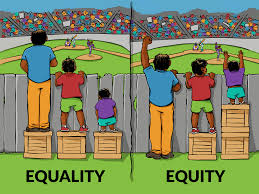Overview:
Students work to understand constitutional rights and social justice over the yearlong social studies course. This specific learning experience will focus around the question of wheather or not the Declaration of Independence, which established an original vision for what our country was intended to be-a society of equals furnished with unalienable rights, and controlling the power to direct government, is actually fulfilling its founding ideals. Students will explore the gaps between this historic model and reality. Students will be encouraged to explore and gain perceptions of history and present life In America.
The Declaration of Independence-What is it? (Key Knowledge/Understanding)
Show documentary or video discussing the Declaration of Independence. Display a chart with the text of the Declaration of Independence so that the class can read, internalize, and digest each segment of the document.
https://youtu.be/SjnAvy979bc

Fun Facts Game: 
Incorporate fun facts about the Declaration of Independence to keeps students engaged and interested:
- Did you know a first printing of the Declaration of Independence was found at a flea market?
- [In 1989, a Philadelphia financial analyst bought an old painting (a depiction of a country scene) for $4 at a flea market in Adamstown, Pennsylvania, mostly because he liked the frame. He liked it even more once he found that the painting housed a rare and valuable document.
- The buyer was investigating a tear in the canvas, and the frame fell apart in his hands when he attempted to detach it from the painting, leading him to discover a folded document which appeared to be an old copy of the Declaration of Independence stored between the canvas and its wood backing. After a friend who collected Civil War memorabilia advised him to have it appraised, he learned that the document was in fact a rare original Dunlap broadside, one of 500 official copies from the first printing of the Declaration of Independence in 1776. Only twenty-three similar copies were known to exist before this find, of which a mere two were privately owned]
- Did you know that the Declaration of Independence wasn’t signed on July 4th?
- [On July 1, 1776, the Second Continental Congress met in Philadelphia, and on the following day 12 of the 13 colonies voted in favor of Richard Henry Lee’s motion for independence. The delegates then spent the next two days debating and revising the language of a statement drafted by Thomas Jefferson. On July 4(Links to an external site.)Links to an external site., Congress officially adopted the Declaration of Independence, and as a result the date is celebrated as Independence Day. Nearly a month would go by, however, before the actual signing of the document took place. First, New York’s delegates didn’t officially give their support until July 9 because their home assembly hadn’t yet authorized them to vote in favor of independence. Next, it took two weeks for the Declaration to be “engrossed”—written on parchment in a clear hand. Most of the delegates signed on August 2, but several—Elbridge Gerry, Oliver Wolcott, Lewis Morris, Thomas McKean and Matthew Thornton—signed on a later date. (Two others, John Dickinson and Robert R. Livingston, never signed at all.) The signed parchment copy now resides at the National Archives in the Rotunda for the Charters of Freedom, alongside the Constitution and the Bill of Rights.]
- There is something written on the back of the Declaration of Independence..
[In the movie “National Treasure,” Nicholas Cage’s character claims that the back of the Declaration contains a treasure map with encrypted instructions from the founding fathers, written in invisible ink. Unfortunately, this is not the case. There is, however, a simpler message, written upside-down across the bottom of the signed document: “Original Declaration of Independence dated 4th July 1776.” No one knows who exactly wrote this or when, but during the Revolutionary War years the parchment was frequently rolled up for transport. It’s thought that the text was added as a label.]
Foundation Questions: (Student Learning Goals)
- What were the main reasons for the Declaration of Independence?
- Is the Declaration of Independence a legally binding document?
- What are the rights of the people?
Guiding Questions: (Challenging Problem/Question) (Reflection)
- Is America a society of equals?
- Do we live in a true democracy?
- Do we all have the rights that we deserve?
- What rights are defined in the Declaration of Independence?
- Does the Declaration of Independence still have meaning for Americans?
- What are the gaps between these principles and the reality that we see?
- In ways in which we can strive to create equality and justice for all?
- If we could amend or add items what would they be? Do you think the document needs changed or is it a societal issue?
- What are your ideas that will work to get back America back to he principles stated in the Declaration of Independence?
- Can you think of ways within your community that these ideas might work to enhance lives for everyone?

Project: (Student Voice and Choice) (Authenticity)
Each student will create a community based social justice project in which they will work to create equity and fairness in an area that it may be lacking. Find a social justice problem within your community that requires action and create a plan to assist with this problem. Each student will present his or her idea in the classroom.
You may present your idea in any way you see fit. Be creative and clearly explain your message.


